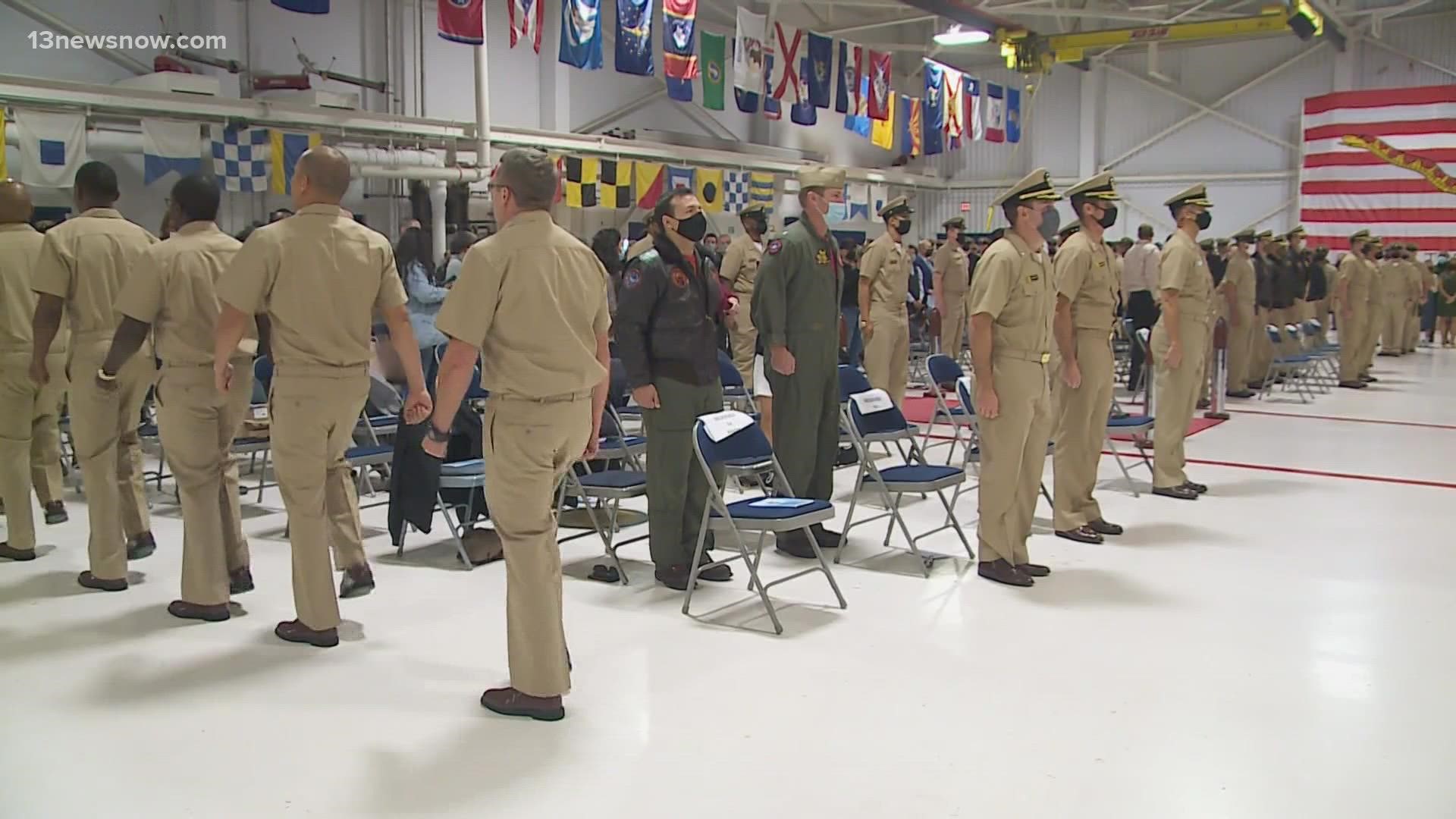VIRGINIA BEACH, Va. — According to old salts, chiefs run the Navy.
The Chief Petty Officer Pinning Ceremony is the culmination of a six-week training period where senior enlisted leaders are challenged on their leadership and mentoring abilities.
If they pass the test, they're promoted to E-7.
The chief petty officer, as recognized today, was officially established in 1893. For 128 years, they have bridged the gap between officers and enlisted personnel, acting as supervisors as well as advocates for their sailors.
Master Chief De'Andre Beaufort is Command Master Chief for NAS Oceana.
"In a sense, we're like middle management," he said. "We are there to mentor, train, and empower our junior sailors... but at the same time, we're mentoring and training our junior officers and advising our senior officers."
At the pinning ceremony, each new chief receives the fouled anchor insignia to wear on their uniform collar. The ceremony also includes the "donning of the hat."
It's a moment that religious programs specialist Matthew Timper has waited 16 years for.
"It's an incredibly proud moment, what we have to go through and everything we're tested on, really just challenges our resilience and leadership," he said.
More than 4,600 sailors are expected to be promoted to chief petty officer, Navy-wide, in Fiscal Year 2022. Only about 25 percent of those who are eligible actually end up getting the promotion.
Besides the additional prestige that comes with being a chief, there is also the pay. An E-7 chief can make up to $72,000 a year while E-8 and E-9 senior chiefs and master chiefs make even more.

